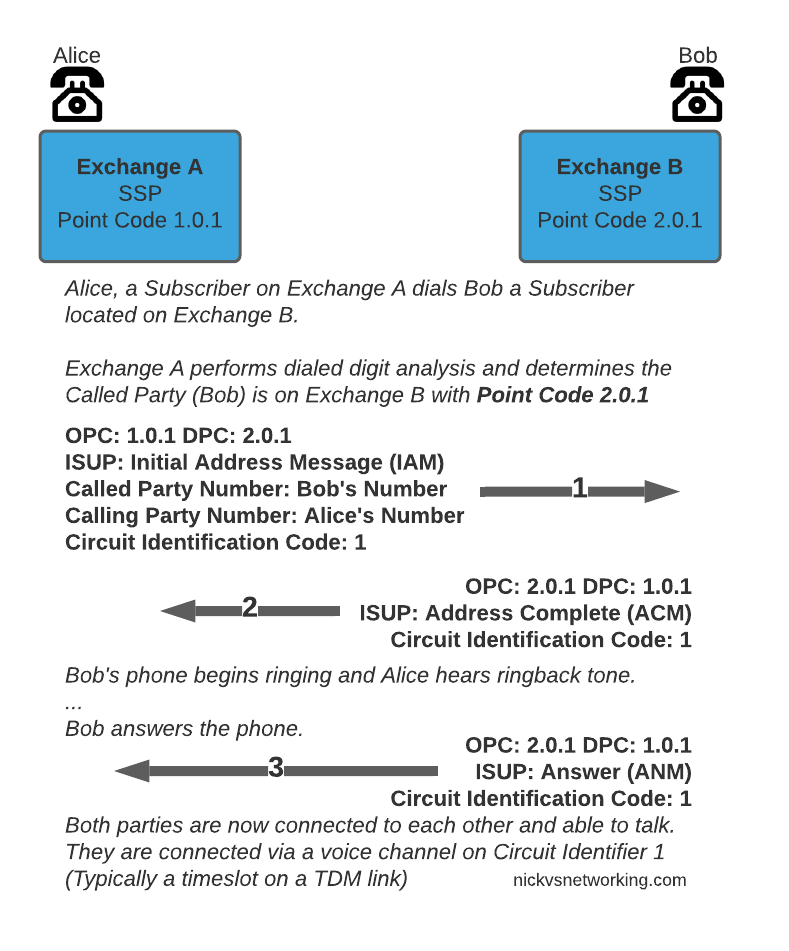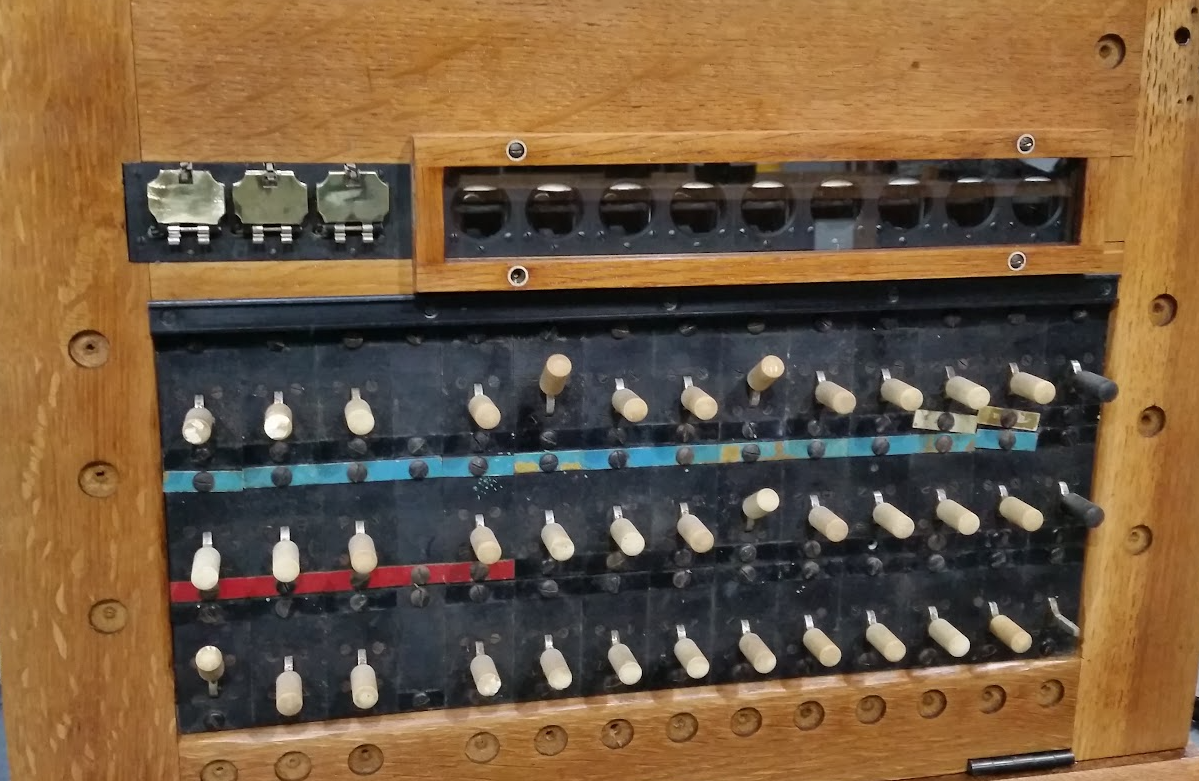So far in our lab we’ve got connectivity between to points, but we’re not carrying any useful data on top of it.
In the same way that TCP is great, but what makes it really useful is carrying application layers like HTTP on top, MTP3 exists to facilitate carrying higher-layer protocols, like ISUP, MAP, SCCP, etc, so let’s get some traffic onto our network.
ISUP is the ISDN User Part, ISUP is used to setup and teardown calls between two exchanges / SSPs – it’s the oldest and the most simple SS7 application to show off, so that’s what we’ll be working with today.
If you’ve not dealt much with ISDN in the past, then that’s OK – we’re not going to deep dive into all the nitty gritty of how ISDN Signaling works, but we’ll just skim the surface to showing how SS7/Sigtran transports the ISUP packets. So you can see how SS7 is used to transport this protocol.
Very Basic ISDN Signalling
ISUP is used to setup and teardown calls between telephone exchanges, which in SS7 networks, are the Service Switching Points (SSPs) we talked about in this post.
You can think of it a lot like SIP, which is if not the child of ISUP, then it at least bares a striking resemblance.
So let’s look at an ISUP call flow:

The call is initiated with an Initial Address Message (IAM), akin to a SIP INVITE, sent by the SSP/Exchange of the calling party to the SSP/Exchange of the called party.
When the remote party starts to ring, the remote exchange sends an Address Complete (ACM), which is similar to a 100 TRYING in SIP.
Once the remote party answers, the remote exchange sends back an Answer Message (ANM), and our call starts, just like a 200 OK.
Rather than SDP for transferring media, timeslots or predefined channels / circuits are defined, each identified by a number, which both sides will use for the media path.
Finally whichever side terminates the call will send a Release (REL) message, which is confirmed with the Release Complete (RLC).
I told you we’d be quick!
So that’s the basics of ISUP, in our next post we’ll do some PCAP analysis on real world ISUP flows!
